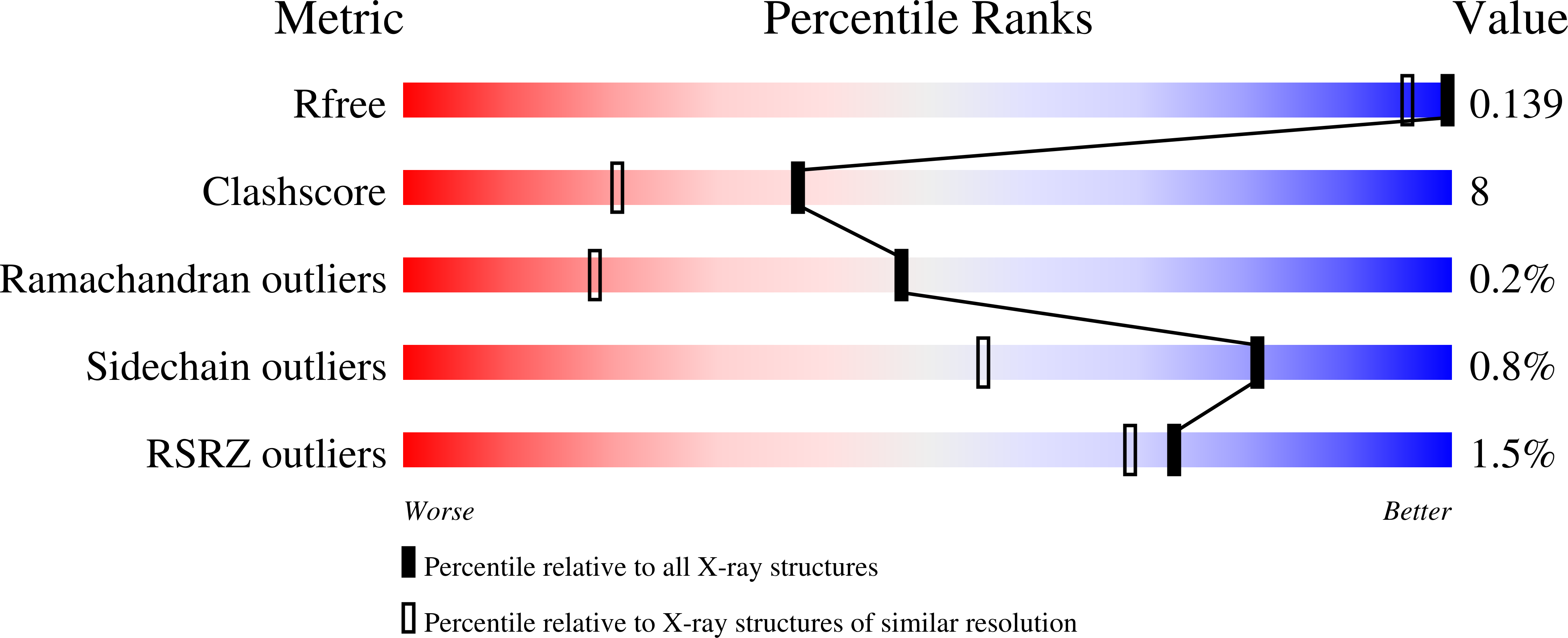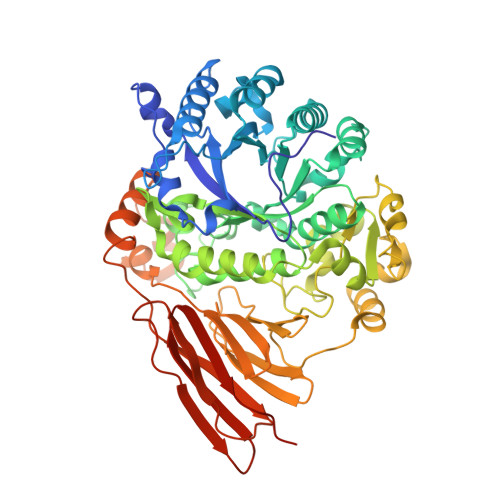Towards Efficient Enzymes for the Generation of Universal Blood Through Structure-Guided Directed Evolution.
Kwan, D.H., Constantinescu, I., Chapanian, R., Higgins, M.A., Koetzler, M., Samain, E., Boraston, A.B., Kizhakkedathu, J.N., Withers, S.G.(2015) J Am Chem Soc 137: 5695
- PubMed: 25870881
- DOI: https://doi.org/10.1021/ja5116088
- Primary Citation of Related Structures:
4D6C, 4D6D, 4D6E, 4D6F, 4D6G, 4D6H, 4D6I, 4D6J, 4D71, 4D72 - PubMed Abstract:
Blood transfusions are critically important in many medical procedures, but the presence of antigens on red blood cells (RBCs, erythrocytes) means that careful blood-typing must be carried out prior to transfusion to avoid adverse and sometimes fatal reactions following transfusion. Enzymatic removal of the terminal N-acetylgalactosamine or galactose of A- or B-antigens, respectively, yields universal O-type blood, but is inefficient. Starting with the family 98 glycoside hydrolase from Streptococcus pneumoniae SP3-BS71 (Sp3GH98), which cleaves the entire terminal trisaccharide antigenic determinants of both A- and B-antigens from some of the linkages on RBC surface glycans, through several rounds of evolution, we developed variants with vastly improved activity toward some of the linkages that are resistant to cleavage by the wild-type enzyme. The resulting enzyme effects more complete removal of blood group antigens from cell surfaces, demonstrating the potential for engineering enzymes to generate antigen-null blood from donors of various types.
Organizational Affiliation:
⊥Department of Biochemistry and Microbiology, University of Victoria, Victoria, British Columbia, Canada V8W 3P6.
















